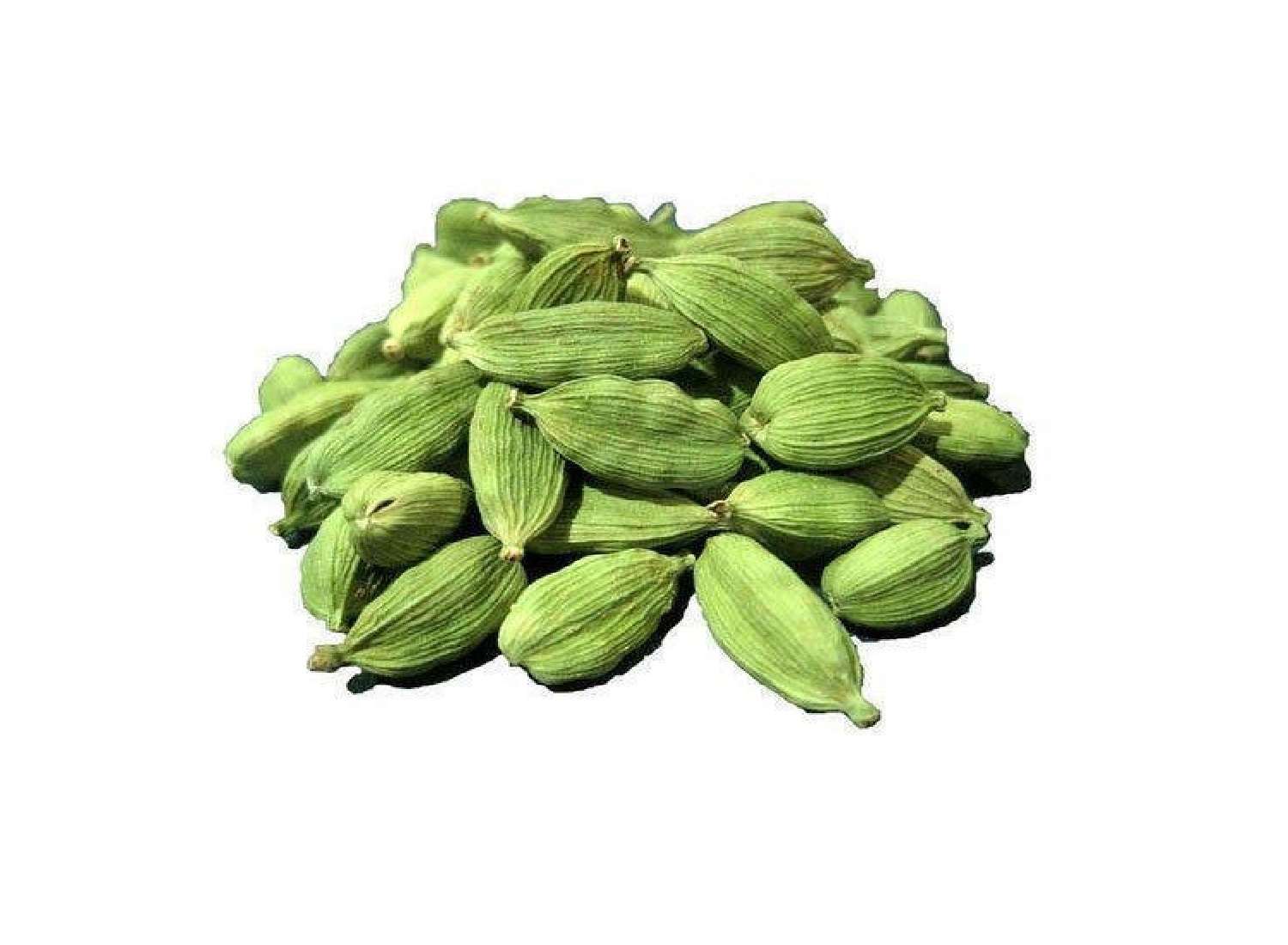Plant
Native to the moist forests of southern India, cardamom is cultivated in India in our plantations with utmost care. Leafy shoots arise 1.5 to 6 metres (5 to 20 feet) from the branching rootstock. Flowering shoots, approximately 1 metre long, may be upright or sprawling. Each bears numerous flowers about 5 cm (2 inches) in diameter with greenish petals and a purple-veined white lip.
Fruit
The whole fruit, 0.8 to 1.5 cm, is a green, three-sided oval capsule containing 15 to 20 dark, reddish brown to brownish black, hard, angular seeds. They are picked or clipped from the stems just before maturity, cleansed, and dried in a heated curing chamber. After curing and drying, the small stems of the capsules are removed by winnowing. Decorticated cardamom consists of husked dried seeds. Dried pods are triangular in cross-section and spindle-shaped, with a thin, papery outer shell and small, black seeds. Pods are light green in colour
Uses
Cardamom pods contain a number of seeds, but the entire cardamom pod can be used whole or ground. Cardamom is used mainly in Indian cooking as well as Middle Eastern cuisine. In Indian recipes, whole cardamom pods are used in preparing sweets, desserts and various curries. In Middle Eastern recipes, ground cardamom is used in preparing certain desserts.
![]()

